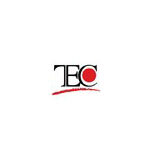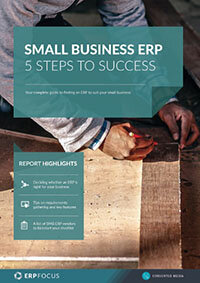How the use of scorecards brings logic to ERP demos
When selecting the best ERP software for your organization, a vendor demo can be exciting. It’s important to see software in action and understand how it will perform.
But what if a vendor has a relatively weak product but a salesman who is really good at demos? Imagine you’re hiring and a particular candidate wows the interviewers—not because of their work experience but because of their charisma. From job candidates to enterprise software, a great presentation doesn’t guarantee a good fit. Using scorecards during ERP demos can help avoid that situation.
A scorecard lists out all the features that you require from an ERP system. You can record your impressions by assigning a score to each line item as well as writing down important notes. Using the same scorecard for each demo you’ve scheduled ensures that you’re evaluating all products equally. The scorecards will also help you compare the solutions once all the demos have been completed.
Keeping demos on script
Using a scorecard can ensure ERP vendors follow the same format for their demos, making it easier to compare their products. Since you’ve invited only a few vendors to present to your selection team, it’s likely that you already know that they can meet your critical requirements. Seeing a solution demoed offers a chance to delve deeper and make sure it’s the right fit.
Get your five-step guide to mastering ERP demos
Scorecards also help keep your team in control of the demo. If a vendor keeps expounding on a particular feature of their ERP, you can remind the presenter to return to the script by proceeding to the next item on the scorecard.
Maintaining objectivity
The best way to record your impressions is by assigning a number value or range for each. For example, “excellent” is not as informative as “4 stars out of a possible 5 stars.” The latter tells you that, while great, there was some hesitation or some points deducted. A numerical system also allows you to average the scores given by all members of your selection team.
Scorecards also help prevent the “wow factor” from overshadowing the rest of the presentation. Imagine a solution has a particularly simple and elegant interface that is very easy to use. Your selection team might be suitably impressed and give that portion the highest marks. However, if lower marks are recorded in other important areas, the scorecard will help prevent that one really impressive element from dominating your overall impression of the solution and obscuring some deficit. It enables more objective and dispassionate assessments by your team.
Assessing soft factors
Determining whether or not a certain business process is supported by an ERP isn’t too hard. But what about whether it has an intuitive interface? Or whether the vendor seems like they would be easy to work with? Or whether or not it seems easy to run specific functions? Soft factors are important. An ERP that gets full marks for its features but is difficult to learn and frustrating to use won’t be a good investment.
All of these soft factors are hard to rate by simply ticking a box. However, if each member of your selection team records their impressions of these subjective factors on their scorecard, it will be easier to compare notes and reach a consensus.
Remember that an ERP must have mass appeal as it will be used by people across multiple departments. Scorecards help collect and organize the impressions of multiple stakeholders to make the most of the demo process.
Refreshing your demo team's memories
Scheduling realities can stretch out the demo process. You don’t want the last presentation to get the top spot just because it’s freshest in everyone’s minds.
Don’t let a time lag end up taking you down the path of least resistance. Scorecards can help you compare the shortlisted solutions very carefully so as to ultimately choose the very best solution for your requirements. When your selection team tabulates the results, it may come as a surprise that a particular solution ends up scoring very highly while another that left a strong impression didn’t score very well overall.
Using scorecards during software demos provides you with a more organized and efficient method of evaluating the software. You are better informed about the product’s features and ease of use and you have the information you need to make your final decision.
Free white paper
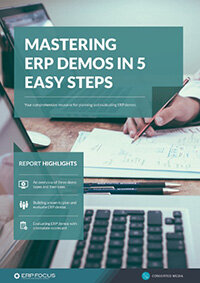
ERP Demo Guide & Scorecard
Master your ERP demo with 5 easy steps using our free guide (includes demo scorecard)
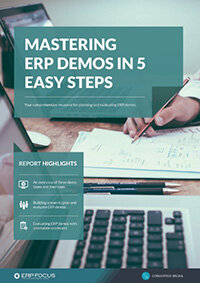
Featured white papers
Related articles
-
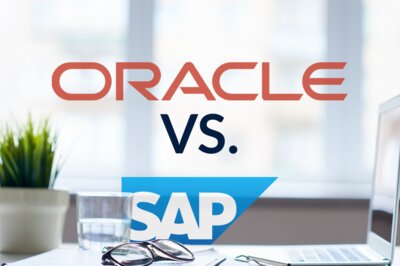
Real life experiences: Oracle vs SAP
A project manager's take on Oracle and SAP' strengths and weaknesses
-

CMMC Compliance: What Aerospace and Defense Manufacturers Need to Know
Key insights on CMMC compliance, deadlines, and securing DoD contracts with CMMC 2.0 certificatio...
-

How to rank ERP vendors based on their ERP demo
Key areas to assess during your ERP demos

